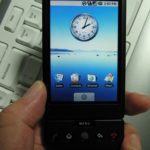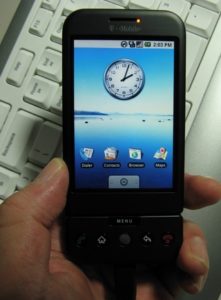
An international market research firm predicts a 55-percent jump in smart-phone sales this year—a projection that could lead to an unprecedented increase in internet-enabled phone use during colleges’ 2010-11 academic year.
The mobile device market analysis, released Sept. 7 by International Data Corp. (IDC), is welcome news to researchers who have predicted a jump in smart-phone use for educational purposes, because college-aged men and women are among the likeliest to use the technology.
There will be about 270 million smart phones—such as the iPhone, Android, and BlackBerry—shipped during 2010, a major jump from the 173 million sold in 2009, according to IDC’s projections.
More than 119 million smart phones were shipped in the first half of 2010, up from the 77 million shipped in the first six months of 2009, according to the report.
The IDC report credits the sharp increase in smart-phone sales to the release of devices like the EVO 4G, iPhone 4, and BlackBerry Torch.
The Google Android smart-phone operating system was labeled a “wild card” in the IDC analysis, citing its “ease of use” that appeals to vendors worldwide. The market share for Android’s mobile device OS is 16.3 percent in 2010. The Symbian operating system leads the way with 40.1 percent of the market share.
Customers and phone vendors are “drawn to Android because it allows them to present their own approach to what a smart-phone experience can be,” the report said. IDC’s forecast projected a significant drop in sales by 2014, however, when the smart-phone market is expected to grow by just 13.6 percent.
A national survey of 500 students nationwide conducted by a researcher at Ball State University in Muncie, Ind., showed that smart-phone usage among college students increased from 27 percent in February 2009 to 48 percent in July 2010.
Nine of 10 students who own a smart phone use the device to access the internet, according to the Ball State survey, conducted by journalism professor Michael Hanley, director of the university’s Institute for Mobile Media Research.
Hanley said the growing embrace of mobile devices on college campuses could create enormous demand for web-enabled eReaders like the Apple iPad, a device already used on campuses across the country just five months after its release.
“In the next few years, I see smart phones saturating the collegiate market, but at the same time, devices similar to the iPad will become increasingly popular among young people,” he said.
Smart phones have become students’ “core mobile communication and entertainment device,” he added.
“College students are the first to adopt new types of communication technologies.”
Survey results from EDUCAUSE’s Center for Applied Research (ECAR), released last November, also revealed a surge in the use of mobile devices among students, with several respondents commenting on the distraction smart phones are causing in the classroom, where lit-up screens can take attention away from a professor.
When asked if they thought instructors should be able to ban the use of mobile devices during instruction, 51 percent of students in the EDUCAUSE survey said yes. Agreement was much higher among older students than younger ones.
The EDUCAUSE research, which included a web-based survey of freshmen and seniors at 103 four-year colleges and universities and 12 two-year schools, included a caveat for campus IT officials enthused by the wide acceptance of smart phones.
If smart phones become universal on campuses and the cost of mobile web service drops, “institutions could be quickly overwhelmed with demands for technical support and development of new mobile services,” according to the survey.
If colleges and universities are able to stay ahead of the smart-phone wave, the EDUCAUSE survey concluded that “[p]erhaps institutional implementations of mobile services will encourage even more student use of the internet from handheld devices.”
- Research: Social media has negative impact on academic performance - April 2, 2020
- Number 1: Social media has negative impact on academic performance - December 31, 2014
- 6 reasons campus networks must change - September 30, 2014
